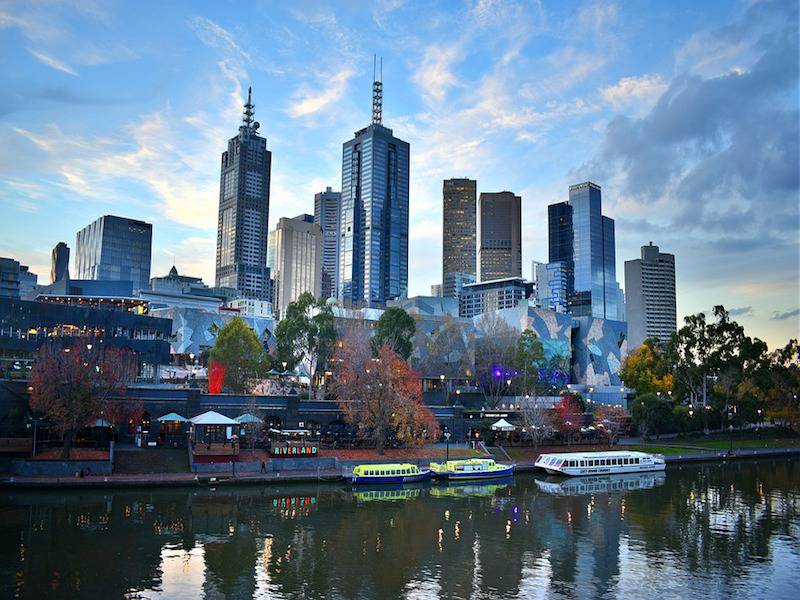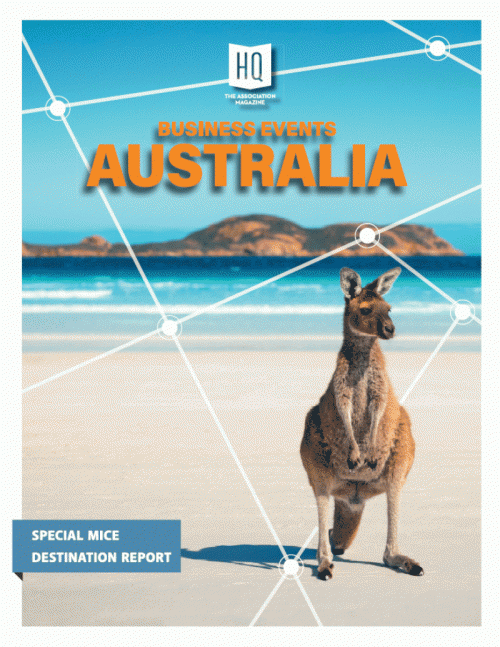Braced for the future

Karen Bolinger, CEO of Melbourne Convention Bureau, was elected as the new President of the Association of Australian Convention Bureaux (AACB) in early September. She told HQ what her new role means to Australia’s business events industry.
 What are your goals as AACB’s new president?
What are your goals as AACB’s new president?
AACB has a powerful voice in advocating for industry, stakeholders and partners who benefit from the sector, as well as influencing government to raise the profile of this vital economic driver for Australia. I plan to continue the great work that has already been achieved and delivering new initiatives established in the 2017/18 strategic plan.
What will be your strategy to balance business support through AACB for big and smaller cities in Australia?
AACB’s current strategy applies equally to large and small destinations alike. Our key focus is to raise the profile of the business events industry across Australia through communications and market intelligence activities that drive our advocacy agenda. By raising the profile of the industry, we seek to drive positive policy and investment decisions.
The AACB is also a unique club of competitors that enables bureau staff to network, exchange ideas and learn from each other. However, we continuously review our value proposition to all members, and look forward to the outcomes of the strategic planning process that we are currently undertaking.
How do you see AACB’s contribution to the meeting industry in Australia?
AACB’s longstanding history in measuring bid performance amongst its members recently transitioned into a more robust market intelligence project, providing an in-depth forward analysis of the success or failure of bids and the pipeline available. As mentioned previously, this research informs our advocacy agenda, and has been recognised across government and industry stakeholders as leading intelligence. We will continue to explore how we grow this initiative and better disseminate key findings to inform both supply and demand activities.
Moving forward, the AACB and broader industry will seek to tell the business events story in a more compelling and easily understood way in order to better articulate the sector’s value beyond the measurable economic metrics, such as knowledge creation and exchange, innovation and trade, and other broader community benefits.
Any thoughts on the meeting industry for regional associations within Australia?
The Association meeting industry within Australia is showing growth, with delegate numbers growing steadily over the past three years. According to data from the Associations Forum Events Survey (2016), the median number of delegates has grown by 38% over the past 3 years (325 in 2014 to 450 in 2016).
From a local perspective, the outlook on association meetings within Australia appears strong. AACB market intelligence shows that across 2016/17, member convention bureaux secured 214 domestic association bids for their respective destinations, translating to more than 90,000 expected delegates who will go on to spend approximately $140m.
Do you see major support from government stakeholders for the expansion of Australia’s meeting industry in next five years?
Yes, Australia’s state and territory governments understand the importance of business events and have significant investment in infrastructure (convention centres) and marketing/bidding agencies (convention bureaux). The federal government is also beginning to recognise the many benefits of the business events industry, including the role that it plays in building a stronger, more productive and more diverse Australian economy, and the long-term strategic benefits accruing from business events, such as attracting trade, investment and global talent.
What are the key markets for Australia in terms of Association meeting industry in the next five years?
Source markets like Europe/UK and North America will continue to be Australia’s key feeders for international association meetings, however, growth within our own region, the Asia Pacific, will undoubtedly take place across the next 5 years as the market matures.
The economic opportunity in the international business events market is a significant one – and, moreover, one that Australia is well placed to capitalise on given our facilities and expertise, attractive tourism assets, and proximity to fast-growing Asia. The incentive sector in China is growing and a key focus area for Business Events Australia (Tourism Australia). In the year ending June 2017, China was Australia’s second largest inbound market for visitor arrivals and the largest market for total expenditure and visitor nights.
How important is collaboration with Australian universities in terms of attracting international business events?
Australian convention bureaux have long partnered with their local universities and research institutions to bid on international association meetings. According to our latest Forward Calendar of International Business Events, 23% of association bids won were due to the strength and professionalism of the bid team – often in partnership with universities. However, future collaboration with universities will be to continue to raise the profile of the business events industry in Australia for mutual benefit, with common goals of transferring knowledge, fostering innovation, boosting productivity, nurturing research collaboration and attracting global talent.
Any words for young professionals in the meeting industry?
There are three choices in life: Give Up, Give In or Give it All You’ve Got.
What words do you live by?
The purpose of life is a life with purpose.

Other Articles
About Us
Supported by the Union of International Associations (UIA), the International Association of Professional Congress Organisers (IAPCO) and the Interel Group, the global public affairs and association management consultancy, Headquarters Magazines serve the needs of international associations organising worldwide congresses.














